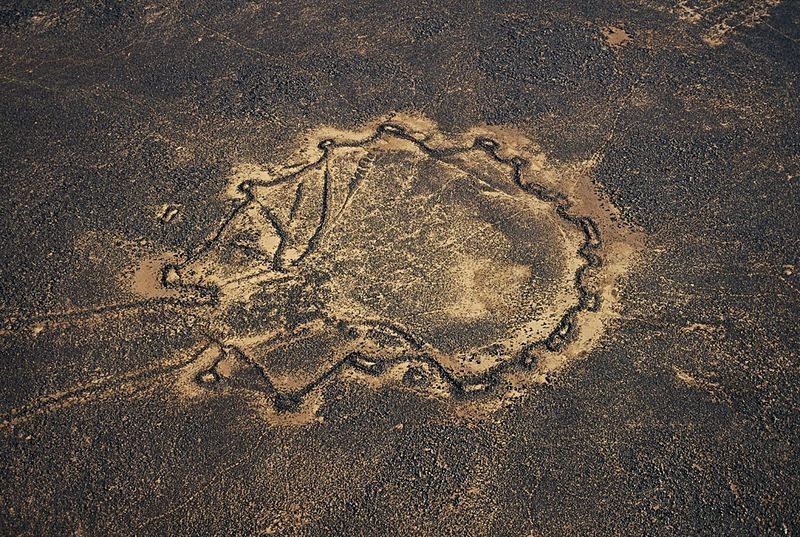During the 1920s, pilots of the Royal Air Force who flew over the deserts of Israel, Syria, Jordan and Egypt, saw some strange line shapes scattered all over the area. They named them “Desert Kites”. Seen from above the lines resembled flying kites. This was a new discovery for the western world, but the local Bedouin population already knew about them for thousands of years. The natives called them “Works of the Old Men”.
Most of the kites are composed of two stone walls with variable thickness and height, that are wider at the beginning and get narrow at the end, forming a V shape. The length of the walls is usually a few hundred meters, but can stretch up to a few kilometers The narrow opening at the end of the funnel leads to an enclosure or a pit. The enclosures have many shapes and sizes: they can be circular, triangular or star-shaped and range from a few hundred square meters to more than ten hectares. There are small stone cells with higher walls joined to the external part of the enclosure. They are circular or square in shape. Some kites have one cell, but their number can go up to several dozen.
![desert-kites-5[2]](https://www.thevintagenews.com/wp-content/uploads/sites/65/2015/10/desert-kites-52.jpg)
![desert-kites-1[2]](https://www.thevintagenews.com/wp-content/uploads/sites/65/2015/10/desert-kites-12.jpg)
![desert-kites-7[2]](https://www.thevintagenews.com/wp-content/uploads/sites/65/2015/10/desert-kites-72.jpg)
The majority of kites were built between 4000 BC and 2000 BC, although some of the oldest structures are dated as far back as 8000 BC.
![desert-kites-6[5]](https://www.thevintagenews.com/wp-content/uploads/sites/65/2015/10/desert-kites-65.jpg)
However, recent access to high-resolution satellite images has revealed even more kites exist than previously believed. They are spread over a huge area that extends from the Arabian Peninsula to the Aral Sea. This new discovery deepens the mystery of the “kites phenomenon”. Solving this puzzle (according to mainstream archeology) means finding the answer to some fundamental questions as animal economy, the disappearance of species, sustainable development and even the development of urbanism.
![desert-kites-4[2]](https://www.thevintagenews.com/wp-content/uploads/sites/65/2015/10/desert-kites-42.jpg)

Source: ancienthistory, amusingplanet, freerepublic
